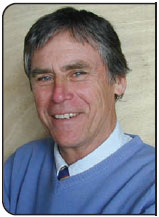Servicios Personalizados
Articulo
Indicadores
Links relacionados
-
 Citado por Google
Citado por Google -
 Similares en Google
Similares en Google
Compartir
SA Orthopaedic Journal
versión On-line ISSN 2309-8309
versión impresa ISSN 1681-150X
SA orthop. j. vol.9 no.2 Centurion ene. 2010
EDITORIAL
Challenges for future research
In past times the main focus in orthopaedics has been on understanding and addressing the biomechanics of the musculoskeletal system. The main challenges that faced orthopaedic practice were clinical and mechanical problems that needed solutions. And, it is true, huge advances have been achieved over the last 50 or so years. However, the price for such progress is the uncovering of new and fertile territory for exploration and development.
New problems emerge from old solutions
Thus, for example, although previously almost all fractures of the clavicle were considered best treated conservatively, it is now well recognised that not all fracture configurations do well and that some have a high incidence of problems, such as non-union requiring further surgery, or malunion with accompanying shoulder girdle biokinetic disturbance, or unacceptable cosmetic sequelae. Similarly the evolution of the understanding of the mechanics of bone fixation, primarily extramedullary fixation, pioneered so effectively by the AO group and carried further with the improved intramedullary devices and techniques, or of the many facets of joint replacement design and techniques, is well known.
Of course, all these solutions will be temporary because of the insatiable human spirit which constantly seeks to improve their finest achievements.
The age of molecular and genetic medicine has opened up an entirely new and unfamiliar vista for the 'orthopod' - the 'physiological landscape' at a molecular level. The possibilities for soft tissue, bone and cartilage therapeutics is set to expand exponentially which, in turn, has the potential for a dramatic shift in the day to day activities of the orthopaedic surgeon.
A better understanding of both molecular mechanisms and genetics has made advances possible in areas that will have a profound effect on how we work.
There is a great deal of experimental work being conducted beyond the field of our vision. The publications by Altman and Horan entitled Tissue Engineering for Ligaments and Guelcher and Hollinger's Introduction to Biomaterials are a stimulating illustration of the spectrum of tissue engineering possibilities in the field of complex structures, like the regeneration of an anterior cruciate ligament, or in compound structures involving morphologically determined re-generation of living bone and cartilage, like a patella, to replace the host's original structure.
Similarly, the current surge of interest in multimodal pain control attests to the improved recognition of the physiological pathways. The link between pain and the inflammatory response in the postoperative phase should also receive new attention because of the close link in their occurrence and modulation pathways.
Perhaps the unmasking of the reasons for why the innate immune system fails, often unpredictably, thereby permitting invading or contaminant organisms to flourish, is the next major hurdle for us to negotiate successfully. Imagine orthopaedic surgery without infection, for this will surely be the prize for such understanding.
The lessons learnt from our evolutionary history are echoed beyond these few examples, throughout the whole spectrum of orthopaedic surgery. Changing expectations and technology that gives new insight and opens up new unexplored diagnostic and therapeutic options, requires that we remain vigilant and open-minded to re-examine and question everything we do.
The content of this journal is interestingly varied with quite a few papers dealing with issues involving the basic sciences, in particular the 'inflammatory response', both infective and non-infective, illustrating how relevant this is to our practice today.
At the time that the Soccer World Cup 2010 is taking place in South Africa it is fitting too that an article on the management of sports-related injuries is featured. Improving performance, as well as extending the period of such performance, of the elite athlete is a key goal for any practitioner involved in this field. Research covering sports injuries is not well enough represented in the SA Orthopaedic Journal and further articles in this field are encouraged.
The prospect for developing new techniques, devices and other therapeutics which is underpinned by innovative thought and research is never ending. Perhaps the biggest hurdle that challenges research today is a financial one. As the government-funded health sector shrinks, the capacity of the 'academic' units to support research projects across the spectrum of orthopaedics, and hence to produce publications, is being significantly challenged. 'Sports injuries' is a prime example.
Hence, the role of the private practitioner in this regard is becoming more important than ever before.
There should be no reason why seminal research in 'new' areas, perhaps unfamiliar to the traditional orthopaedic surgeon, should not take place here in South Africa. All it needs is a bit of effort from each of us and some collaboration with all.
We can, and should, all contribute to developing the new frontiers in orthopaedics.

Prof Johan Walters
Guest Editor
Professor and Head: Department of Orthopaedics,
Groote Schuur Hospital, University of Cape Town














